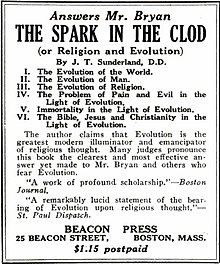User:Barahona003/sandbox
Religion[edit]
Discourse[edit]

Various forms of religious worship existed during this time of African American intellectual reawakening. Although there were racist attitudes within the current Abrahamic religious arenas many African Americans continued to push towards the practice of a more inclusive doctrine. For example, George Joseph MacWilliam presents various experiences, during his pursuit towards priesthood, of rejection on the basis of his color and race yet he shares his frustration in attempts to incite action on part of The Crisis Magazine community [crisis Jan 1920].
There were other forms of spiritualism practiced among African Americans during the Harlem Renaissance. Some of these religions and philosophies were inherited from African ancestry.
For example, the Islam religion was present in Africa as early as the 8th century through the Trans-Saharan trade. Islam came to Harlem likely through the migration of members of the Moorish Science Temple of America, which was established in 1913 in New Jersey.
Various forms of Judaism were practiced, such as Orthodox Judaism and Masorti Judaism and even Reform Judaism, but it was Black Hebrew Israelites that founded their religious belief system during the late 20th century in the Harlem Renaissance.[1]
Traditional forms of religion acquired from various parts of Africa were inherited and practiced during this era. Some commons examples were Voodoo, Santeria, Ifa.
Criticism[edit]
Religious critique during this era was found in literature, art, and poetry. The Harlem Renaissance encouraged analytic dialogue that included the open critique and the adjustment of current religious ideas.
One of the major contributors to the discussion of African American renaissance culture was Aaron Douglas who, with his artwork, also reflected the revisions African Americans were making to the Christian dogma. Douglas uses biblical imagery as inspiration to various pieces of art work but with the rebellious twist of an African influence.[2]
Countee Cullen's poem "Heritage" expresses the inner struggle an African-American has between his past African heritage and the new Christian culture.[3] A more severe criticism of the Christian religion can be found Langston Hughes’ poem “Merry Christmas" where he exposes the irony of religion as a symbol for good and yet a force for oppression and injustice.[4]
ENGLISH 123 The Harlem Renaissance,[5] the New Negro Era. [6]
References[edit]
- ^ https://en.wikipedia.org/wiki/Black_Hebrew_Israelites.
{{cite web}}: Missing or empty|title=(help) - ^ Rampersad, ed. by Alain Locke. With an introd. by Arnold (1997). The new negro : [voices of the Harlem Renaissance] (1st Touchstone ed. ed.). New York, NY: Simon & Schuster. ISBN 0684838311.
{{cite book}}:|edition=has extra text (help);|first=has generic name (help) - ^ Cullen, Countee. "Heritage". Poetry Foundation. Retrieved 19 December 2013.
- ^ Hughes, Langston. "Merry Christmas". Humanities and Social Sciences Net. New Masses. Retrieved 19 December 2013.
- ^ Broughton, John (2008). Wikipedia : the missing manual (1st ed. ed.). Beijing: O'Reilly. ISBN 0-596-51516-2.
{{cite book}}:|edition=has extra text (help) - ^ wikipedia: Harlem Renaissance. Wikipedia. The Free Encyclopedia." retrieved December 10. 2013.

